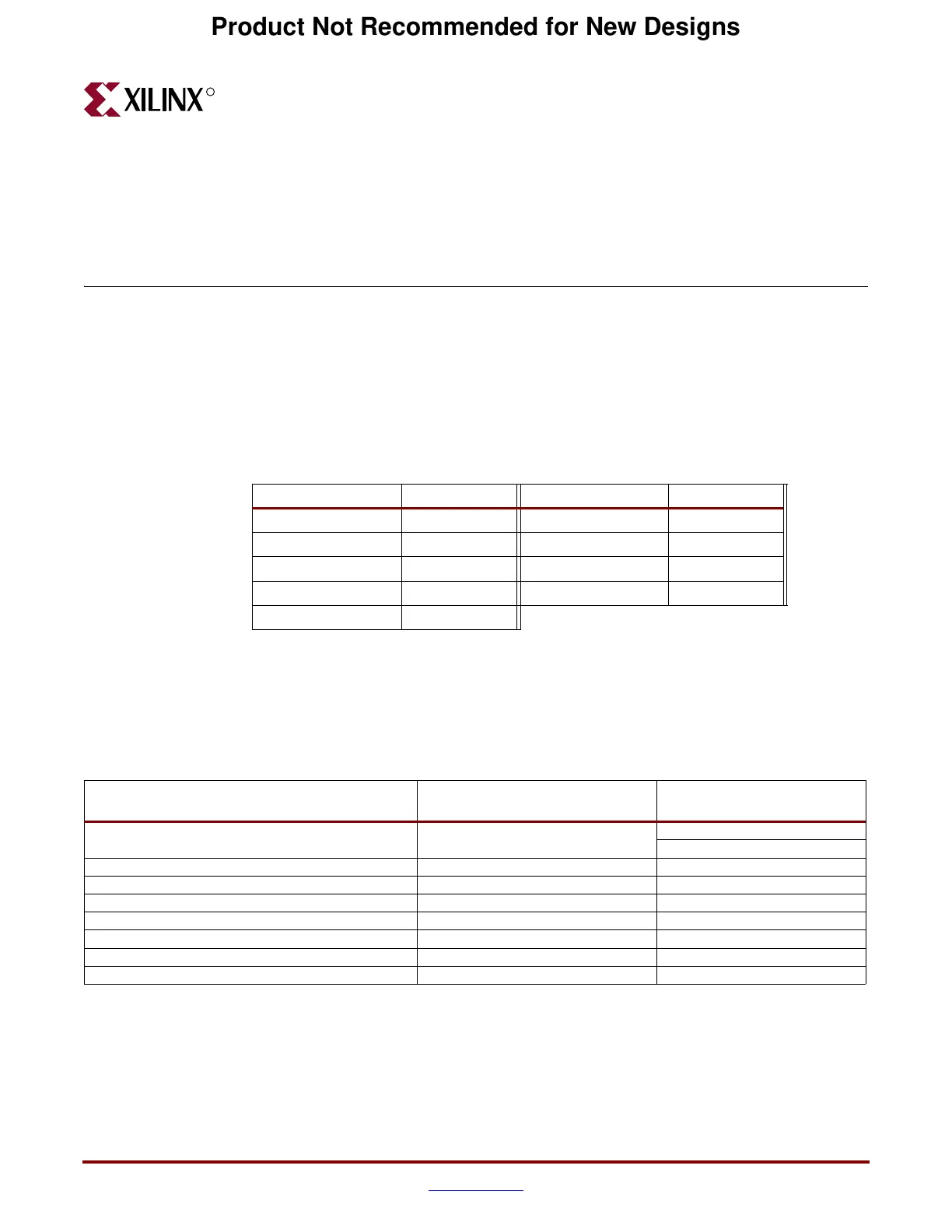RocketIO™ Transceiver User Guide www.xilinx.com 21
UG024 (v3.0) February 22, 2007
R
Chapter 1
RocketIO Transceiver Overview
Basic Architecture and Capabilities
The RocketIO transceiver is based on Mindspeed’s SkyRail™ technology. Figure 1-1,
page 22, depicts an overall block diagram of the transceiver. Up to 20 transceiver modules
are available on a single Virtex-II Pro FPGA, depending on the part being used. Table 1-1
shows the RocketIO cores available by device.
The transceiver module is designed to operate at any serial bit rate in the range of
600 Mb/s to 3.125 Gb/s per channel, including the specific bit rates used by the
communications standards listed in Table 1-2. The serial bit rate need not be configured in
the transceiver, as the operating frequency is implied by the received data, the reference
clock applied, and the SERDES_10B attribute (see Table 1-3).
Table 1-1: Number of RocketIO Cores per Device Type
Device RocketIO Cores Device RocketIO Cores
XC2VP2 4 XC2VP40 0 or 12
XC2VP4 4 XC2VP50 0 or 16
XC2VP7 8 XC2VP70 16 or 20
XC2VP20 8 XC2VP100 0 or 20
XC2VP30 8
Table 1-2: Communications Standards Supported by RocketIO Transceiver
Mode
Channels
(Lanes)
(1)
I/O Bit Rate
(Gb/s)
Fibre Channel 1
1.06
2.12
Gbit Ethernet 1 1.25
PCI Express
(2)
12.5
XAUI (10-Gbit Ethernet) 4 3.125
XAUI (10-Gbit Fibre Channel)
(3)
4 3.1875
(4)
Infiniband 1, 4, 12 2.5
Aurora (Xilinx protocol) 1, 2, 3, 4,... 0.600 – 3.125
Custom Mode 1, 2, 3, 4,... 0.600 – 3.125
Notes:
1. One channel is considered to be one transceiver.
2. Out-of-Band (OOB) signals are not supported with the transceiver.
3. Supported with the GT_CUSTOM primitive. Certain attributes must be modified to comply with the XAUI 10GFC specifications,
including but not limited to CLK_COR_SEQ and CHAN_BOND_SEQ.
4. Bit rate is possible with the following topology specification: maximum 6" FR4 and one Molex 74441 connector.
Product Not Recommended for New Designs

